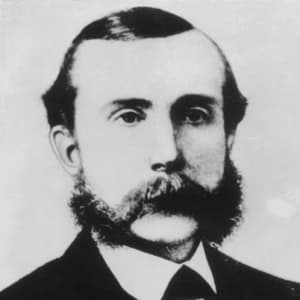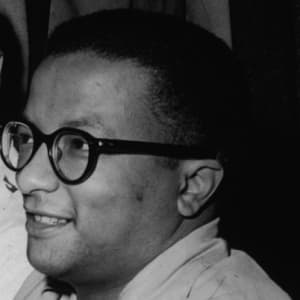
John D. Rockefeller
John D. Rockefeller was the head of the Standard Oil Company and one of the world’s richest men. He used his fortune to fund ongoing philanthropic causes.
Synopsis
American industrialist John D. Rockefeller was born July 8, 1839, in Richford, New York. He built his first oil refinery near Cleveland and in 1870 incorporated the Standard Oil Company. By 1882 he had a near-monopoly of the oil business in the U.S., but his business practices led to the passing of antitrust laws. Late in life, Rockefeller devoted himself to philanthropy. He died in 1937.
Early Years
Born in Richford, New York, on July 8, 1839, John Davison Rockefeller moved with his family to Cleveland, Ohio, at the age of 14. Unafraid of hard work, he embarked on a number of small-business ventures as a teenager, landing his first real office job at age 16, as an assistant bookkeeper with Hewitt & Tuttle, commission merchants and produce shippers.
By the age of 20, Rockefeller, who'd thrived at his job, ventured out on his own with a business partner, working as a commission merchant in hay, meats, grains and other goods. At the close of the company's first year in business, it had grossed $450,000.
A careful and studious businessman who refrained from taking unnecessary risks, Rockefeller sensed an opportunity in the oil business in the early 1860s. With oil production ramping up in western Pennsylvania, Rockefeller decided that establishing an oil refinery near Cleveland, a short distance from Pittsburgh, would be a good business move. In 1863, he opened his first refinery, and within two years it was the largest in the area. It didn't take much further success to convince Rockefeller to turn his attention full-time to the oil business.
Standard Oil
In 1870, Rockefeller and his associates incorporated the Standard Oil Company, which immediately prospered, thanks to favorable economic/industry conditions and Rockefeller’s drive to streamline the company’s operations and keep margins high. With success came acquisitions, as Standard began buying out its competitors.
Standard’s moves were so quick and sweeping that it controlled the majority of refineries in the Cleveland area within two years. Standard then used its size and ubiquity in the region to make favorable deals with railroads to ship its oil. At the same time, Standard got into the business itself with the purchase of pipelines and terminals, setting up a system of transport for its own products. Controlling (or owning) almost every aspect the business, Standard’s grip on the industry tightened, and it even bought thousands of acres of forest for lumber and drilling and to block competitors from running their own pipelines.
Standard’s footprint got bigger as well, and it bought up competitors in other regions, soon pursuing ambitions of being an industry player both coast-to-coast in the U.S. and abroad. In just over a decade since Standard Oil was incorporated, it had a near monopoly of the oil business in the U.S. and consolidated each division under one giant corporate umbrella, with Rockefeller overseeing all of it. Everything Rockefeller had done to this point had led to the first American monopoly, or “trust,” and it would serve as a guiding light for others in big business following behind him.
Antitrust Issues
With such an aggressive push into the industry, the public and the U.S. Congress took notice of Standard and its seemingly unstoppable march. Monopolistic behavior was not kindly regarded, and Standard soon became the epitome of a company grown too big and too dominant, for the public good. Congress jumped into the fray with both feet in 1890 with the Sherman Antitrust Act, and two years later the Ohio Supreme Court deemed Standard Oil a monopoly that stood in violation of Ohio law. Always eager to be a step ahead, Rockefeller dissolved the corporation and allowed each property under the Standard banner to be run by others. The overall hierarchy remained chiefly in place, though, and Standard’s board maintained control of the web of spun-off companies.
Just nine years after the company broke itself into pieces in the face of antitrust legislation, those pieces were again reassembled in a holding company. In 1911, however, the U.S. Supreme Court declared the new entity in violation of the Sherman Antitrust Act and illegal, and it was again forced to dissolve.
Later Years and Legacy
Rockefeller was a devout Baptist, and once retired from the daily operations of running one of the world’s largest businesses (in 1895, at age 56), he kept himself busy with charitable endeavors, becoming one of the more respected philanthropists in history. His money helped pay for the creation of the University of Chicago (1892), to which he gave more than $80 million before his death. He also helped found the Rockefeller Institute for Medical Research (later named Rockefeller University) in New York and the Rockefeller Foundation. In total he gave away more than $530 million to various causes.
With his wife, Laura, Rockefeller had five children, including a daughter, Alice, who died in infancy.
Rockefeller passed away on May 23, 1937, in Ormond Beach, Florida. His legacy, however, lives on: Rockefeller is considered one of America's leading businessmen and is credited for helping to shape the U.S. into what it is today.
His only son, also named John, served by his father’s side as a philanthropist while the elder Rockefeller was still alive and would continue his father’s legacy of giving. During World War II he helped establish the United Service Organizations (USO), and after the war he donated land for the United Nations New York City headquarters. He also donated $5 million for the Lincoln Center for the Performing Arts in New York City, helped in the restoration of colonial Williamsburg, Virginia, and provided funding for the Museum of Modern Art.
Videos
Related Videos
Booker T. Washington – First Black Power Broker(TV-PG; 2:09)
Andrew Carnegie – Wealthy & Wise(TV-PG; 1:38)
Cornelius Vanderbilt – Vanderbilt Family(TV-14; 2:34)
J.P. Morgan – Panic of 1893(TV-14; 3:51)




